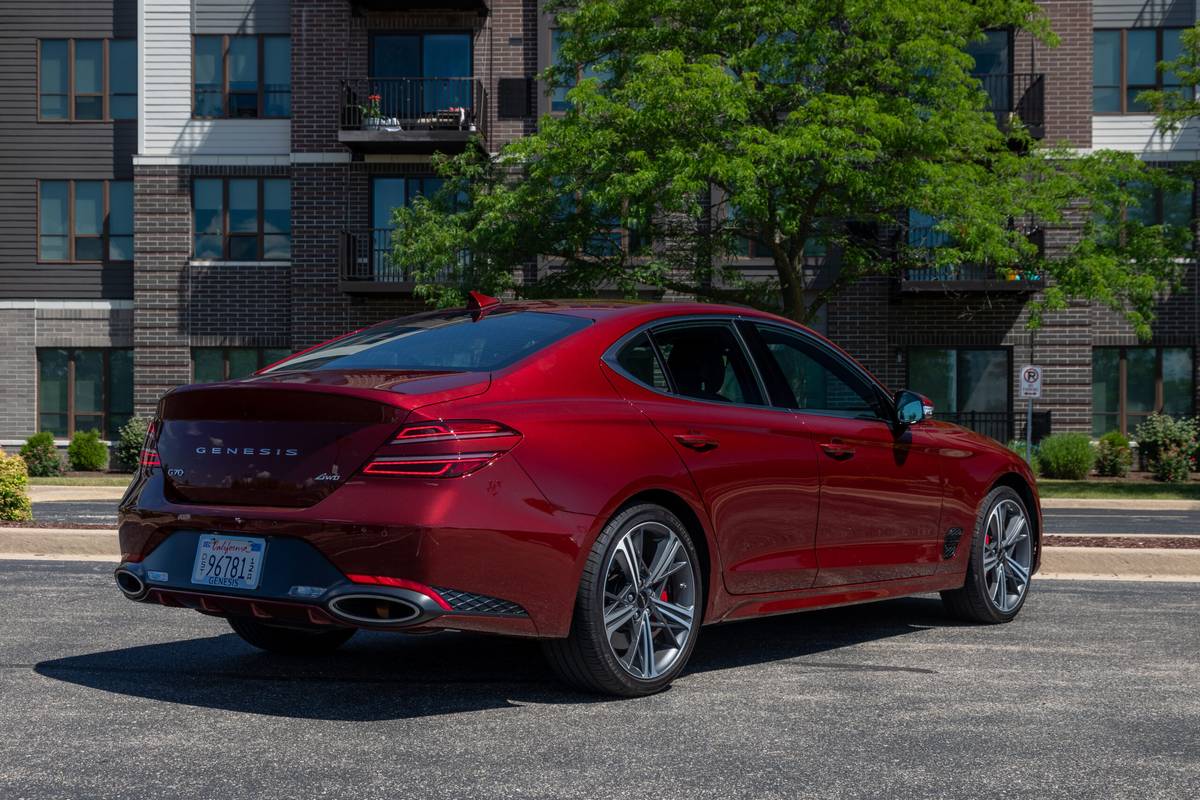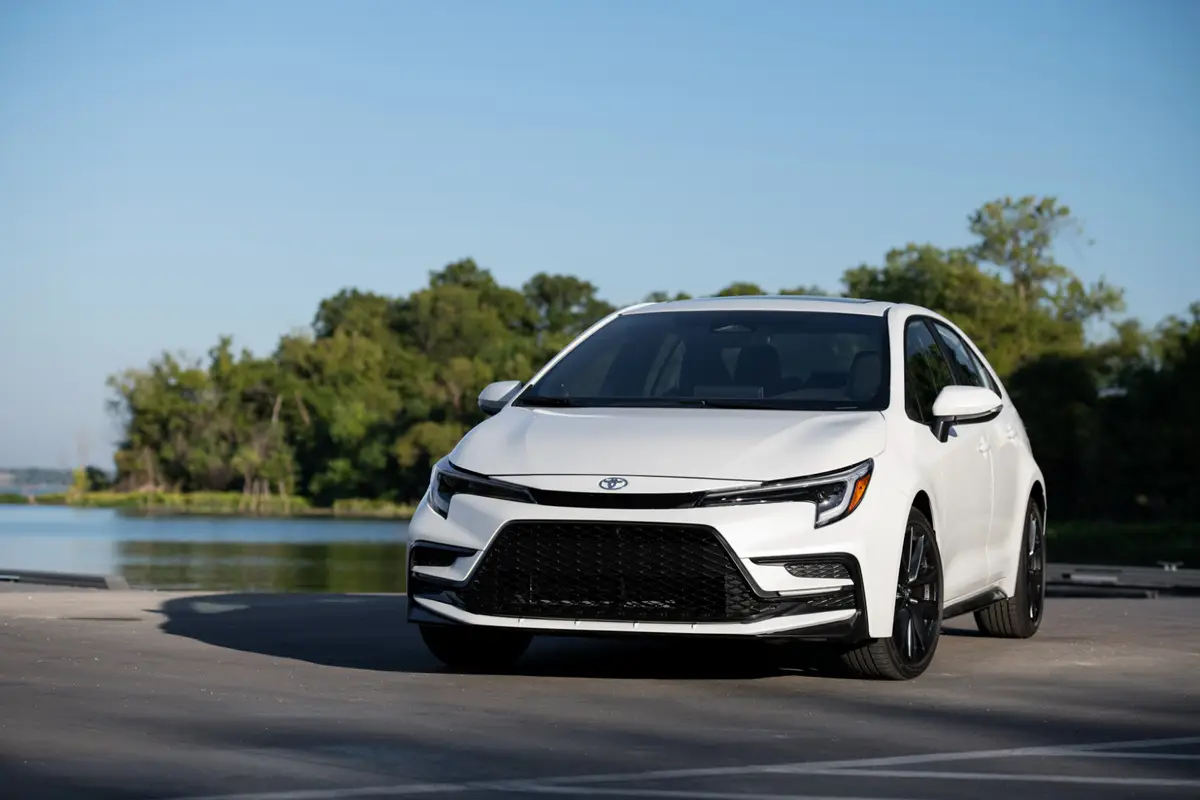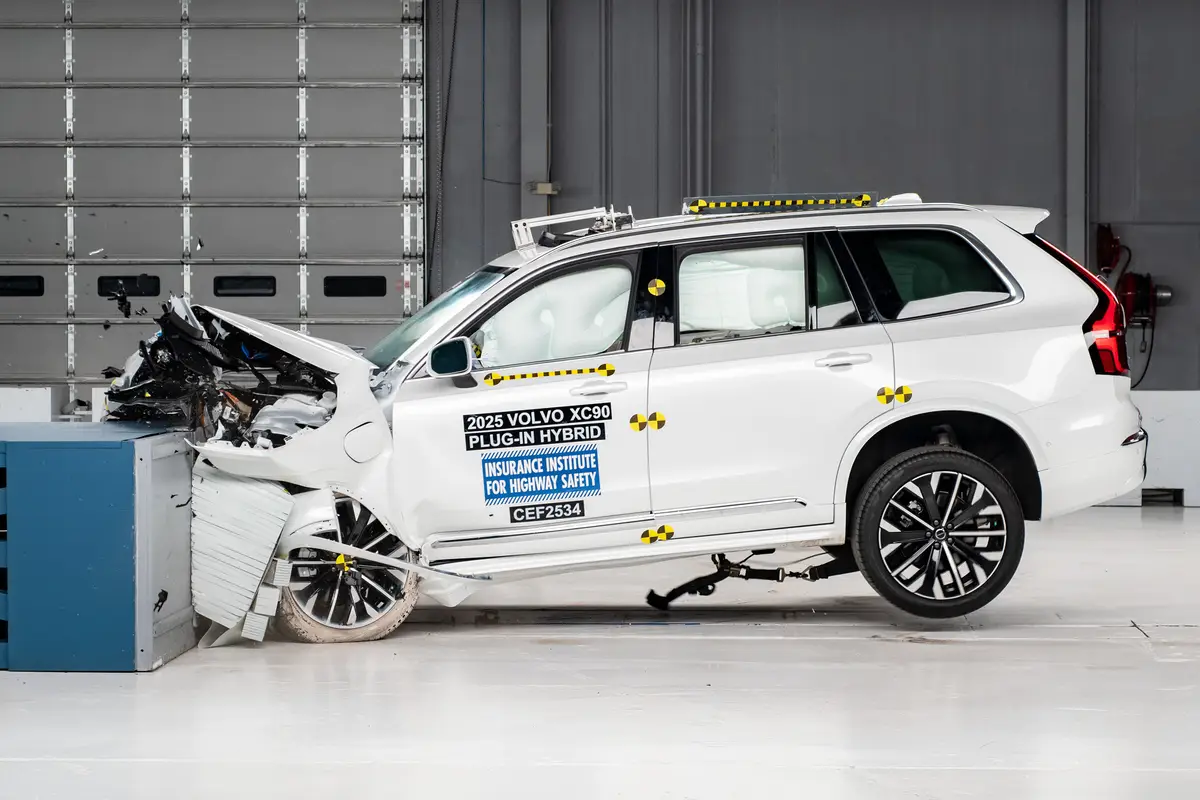chicagotribune.com's view
Call it the Ford Ram.
Or perhaps the Dodge F-150.
The 1997 Ford F-150 pickup truck looks and feels as if it came from the same mold as the Dodge Ram pickup. And that’s good.
Considering Chrysler Corp. is No. 3 in trucks, it must be flattered that No. 1 in trucks, Ford Motor Co., chose to bring out a redesigned and re-engineered full-size pickup with the room and comfort, ride and handling of that Dodge Ram. That’s very good.
Ford has been the industry’s full-size pickup truck sales leader for 18 years. The F-Series truck is not only the industry’s best-selling truck, it is the best-selling nameplate–car or truck.
To keep that sales leadership, and in recognition that neither Chevrolet nor Dodge is standing still, Ford will unveil a remake of its F-150 pickup, the volume leader with almost 70 percent of sales, in January. New versions of the F250 and 350 will arrive later. The F-250 three-quarter-ton truck comes next. Ford will build its new four-door version of the Bronco (to be called Expedition) off that platform for 1997. The one-ton F-350 arrives in 1998.
Ford was one of those on the sidelines snickering in 1994 when Dodge brought out the Ram with a snout that looked like a semi. Trucks, it was believed at the time, were supposed to act tough but look gentle. After all, women were driving trucks, and you didn’t want Mom or Sis to be called Big Bertha whenever they ventured behind the wheel.
But Dodge felt that a truck could look tough but perform in a civilized manner now that men and women who never owned one were buying pickups. Ford, in noting that Dodge sells just about every Ram it can build, got the hint and for 1997 replaced square corners with rounded edges like Dodge’s. It also put a mean mug on the F-150’s exterior but tinkered with the suspension to come up with a comfy long-distance hauler that just happens to look a bit rugged.
The F-150 is offered in regular and super cab versions in Standard, XL, XLT and Lariat series (a Flareside is coming) in two- or four-wheel-drive. The 2WD and 4WD versions have different grilles so you can tell them apart at a glance. The 4WD cross-laced bar grille is more distinctive than the 2WD models’ trio of vertical bars resting against a single horizontal bar.
We tested the ’97 F-150 XLT 4WD super cab and found it a most pleasant machine.
Dual air bags are standard, recognition that people who had traveled in sedans and coupes are now motoring around in pickups and have just as much concern for safety as those who ride closer to the ground.
The bag system is unique. You can insert the key in a dashboard lock to deactivate the passenger-side bag whenever there is no one in that seat and bag deployment serves no useful purpose or when you strap a rear-facing infant car seat upfront and you don’t want the deploying bag to harm the child’s head or undevelo ped neck muscles.
When the passenger bag is deactivated, a yellow light flashes on to serve as a warning to re-activate it when a passenger climbs aboard.
The test vehicle came with the optional 4.6-liter, 210-horsepower, single overhead cam, V-8 engine, which Ford is attempting to tweak to boost it by at least 5 h.p. in the battle with Chevy and Dodge as to who has the most horses.
Another reason for the h.p. tweaking is that the base 4.2-liter, V-6 is rated at 205 to 210 h.p., and Ford fears some folks might say, why should be spend extra money for a V-8 with such a similar rating? The difference between the 4.2- and 4.6-liter engines is pulling power. The 4.6 focuses on low-end torque and is meant to carry full loads or tow.
Ford hasn’t released mileage figures on the 4.6 liter, but notes that in the four-wheel-drive version we tested, it expects a tad better showing than the 13-mile-per-gallon city/17-m.p.g. highway rating of the 5-liter, V-8 i t replaces. We certainly would hope so because truth betold,13/17 is nothing to boast about.
Two other engines are planned, a 5.4-liter version of the 4.6 liter next fall followed by a V-10 a year later. As an aside, do you think with all the models and versions and engines and 2WD and 4WD configurations, the consumer might get a bit confused?
As for 4WD, our test truck came with a transfer case with a lever to yank to engage all wheels. The F-150 also will offer the same dial-up system as on the Ford Explorer sport-utility in which you simply turn the dial on the dash to 4WD and when you need all wheels engaged the system does so on its own. Otherwise it stays in 2WD. Nice option.
Ride and handling are noteworthy for their smoothness. Ford replaced the venerable Twin I-Beam suspension with twin forged upper and lower control arms, a torsion bar and anti-sway bar while beefing up the chassis and frame for improved stability and quiet. The switch allowed Ford to slip in the 4.6-liter, V-8 while lowering and rounding the hood for improved aerodynamics and reduced wind noise.
That means improved road holding without increased harshness fed back into the wheel and seat so you could drive cross-country without fidgeting.
Rear-wheel only anti-lock brakes are standard. Four-wheel ABS is a $500 option to keep the base price down.
In the cabin you get abundant leg, head and arm room. The extended cab cabin has been lengthened by 1.7 inches.
For the first time there’s a door behind the passenger to allow easier entry for packages or people. Without a running board, however, getting a tyke in the back seat will mean having to give him or her a hoist. And though the third door for the first time provides entry or exit in back without having to play with the front seat, adults who venture there better be members in good standing of Weight Watchers or have rubbery legs to fit their entire frame in back. You’ll probably have to limit rear-seat space to packages and svelte kids.
The front seat belt system is mounted in the roof of the cab behind the seat and has to be slid over to allow entry through the third door in back. The third-door version of the Chevy pickup trucks has the belt system mounted in that third door where it’s out of the way.
That third door features a hidden handle that reveals itself only after the passenger door has been opened. This is supposed to keep kids from opening the door and falling out. You may find it odd that sedans and vans and sport-utility vehicles have handles on the back doors and kids don’t fall out, but a pickup truck doesn’t. The third door, an option on Chevrolet extended cab models, is standard on Ford super cab models.
Noteworthy items include a lockable rear tailgate, 16-inch tires replacing 15 inches as standard(and allowing for larger brakes) with 17-inch tires optional, large outside mirrors for excellent side and rear visibility, a power plug in the dash for accessories such as a lap top computer and dual cupholders that pull out from the dash.
Also, there’s fold-away rear seat bottoms to expose a flat floor for storage, platinum-tipped spark plugs that needn’t be changed for 100,000 miles and a stainless steel exhaust with the tailpipe exit in front of the right rear tire rather than under the rear bumper to avoid tailpipe damage when backing into snow or down a boat ramp.
The center front seatback folds down to provide a mini table with a single cupholder and storage space inside. However, unlike the Dodge Ram with a similar fold-down center seat back, the mini table doesn’t have a smooth surface that you can write on.
The F-150 falls short in a few areas. This 4×4 stands nice and high for off-road clearance, but without running boards, getting in and out of the cabin is a chore. And the first time, you release the tailgate you better not have one of yourl ittle kids standing directly below or the kid will go through life being called “Shorty” after the heavy metal gate plops down on his or her noggin.
And, sad to say, neither sun nor moon roof is available–for now.
1997 Ford F150 XLT extended cab
Wheelbase: 138.8 inches
Length: 222.3 inches
Engine: 4.6-liter, 210-h.p., V-8 standard; 4.2-liter, 205-h.p., V-6 optional; 5.4-liter, V-8 optional.
Transmission: 4-speed automatic
First time 4.6 offered in F150.
Pluses: Dual air bags and ABS–rear wheel only–standard (four-wheel ABS optional). Third door on passenger side provides rear seat entry/exit for people or packages. Passenger bag has shutoff should no one be in that seat or if you are carrying a rear-facing child seat upfront. Bold, aggressive look of a macho truck, but ride and handling, room and comfort of a car–in other words, the Dodge Ram scenerio. Center seat back folds down to provide storage area/cupholder. Ample engine power. Large outside mirrors for good visibility to the side and rear.
Minuses. Third door is great, but rear-seat room is strictly for kids or packages. Fold-down center seat back would make a handywork desk if top was solid–as in the Ram–and has room for two cupholders rather than just one.
Latest news



